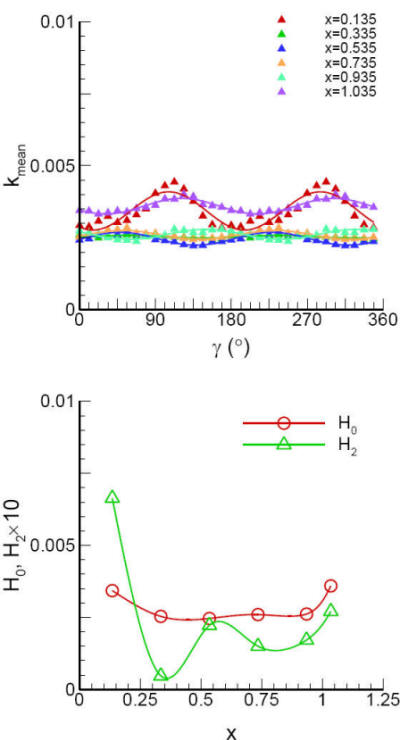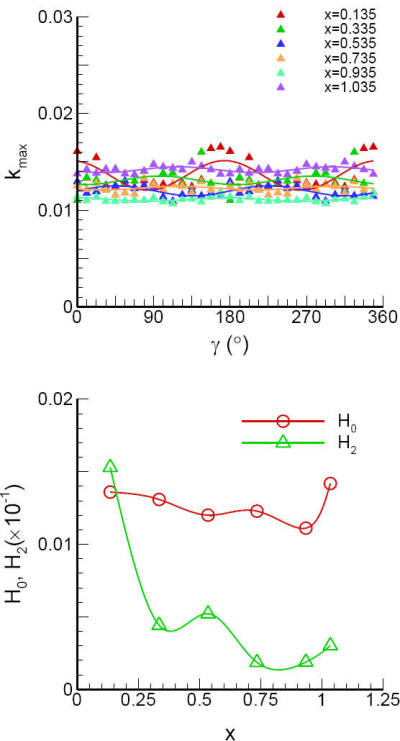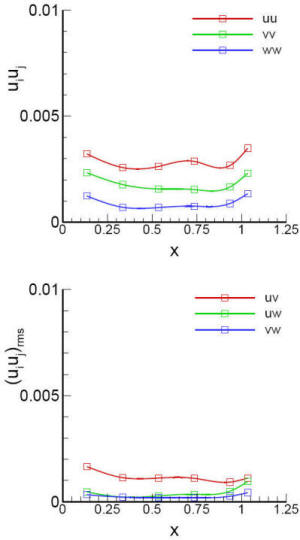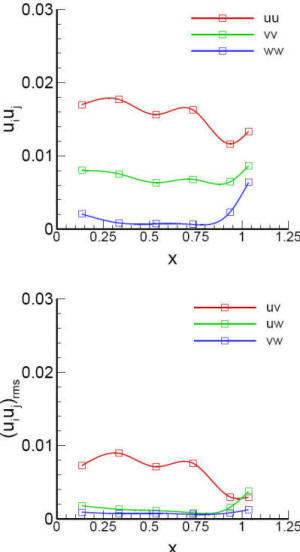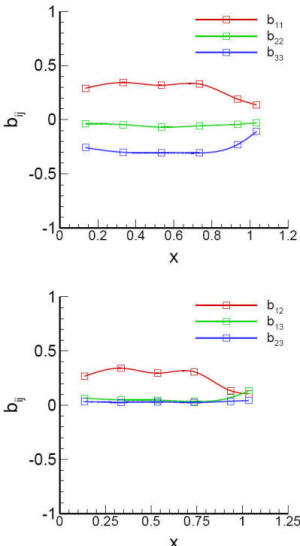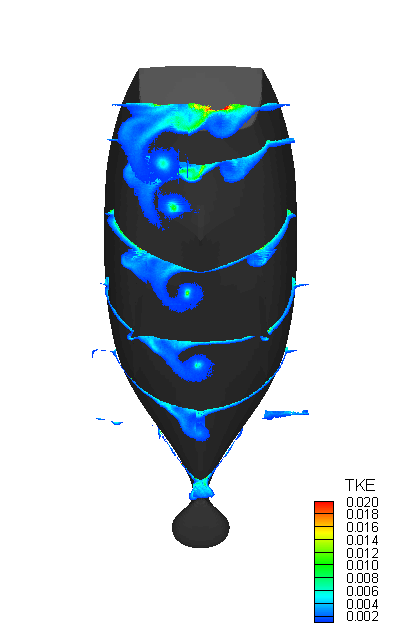
-
Flow Reynolds number Re = UCL/ν = 4.6 x 106
-
The overall structure of k field exhibit coherence with the phase averaged axial velocity U field; thin layers at the bow, growing along the model length, and becomes very thick at the stern
-
The core regions with high k values (e.g. k > 0.01) exist typically near at the model surface, at the center of the vortical flow regions, and near the free surface behind the model transom.
-
The apparent shapes of the k field and the locations of the core region vary in time, i.e. along with the pure yaw motion phase
